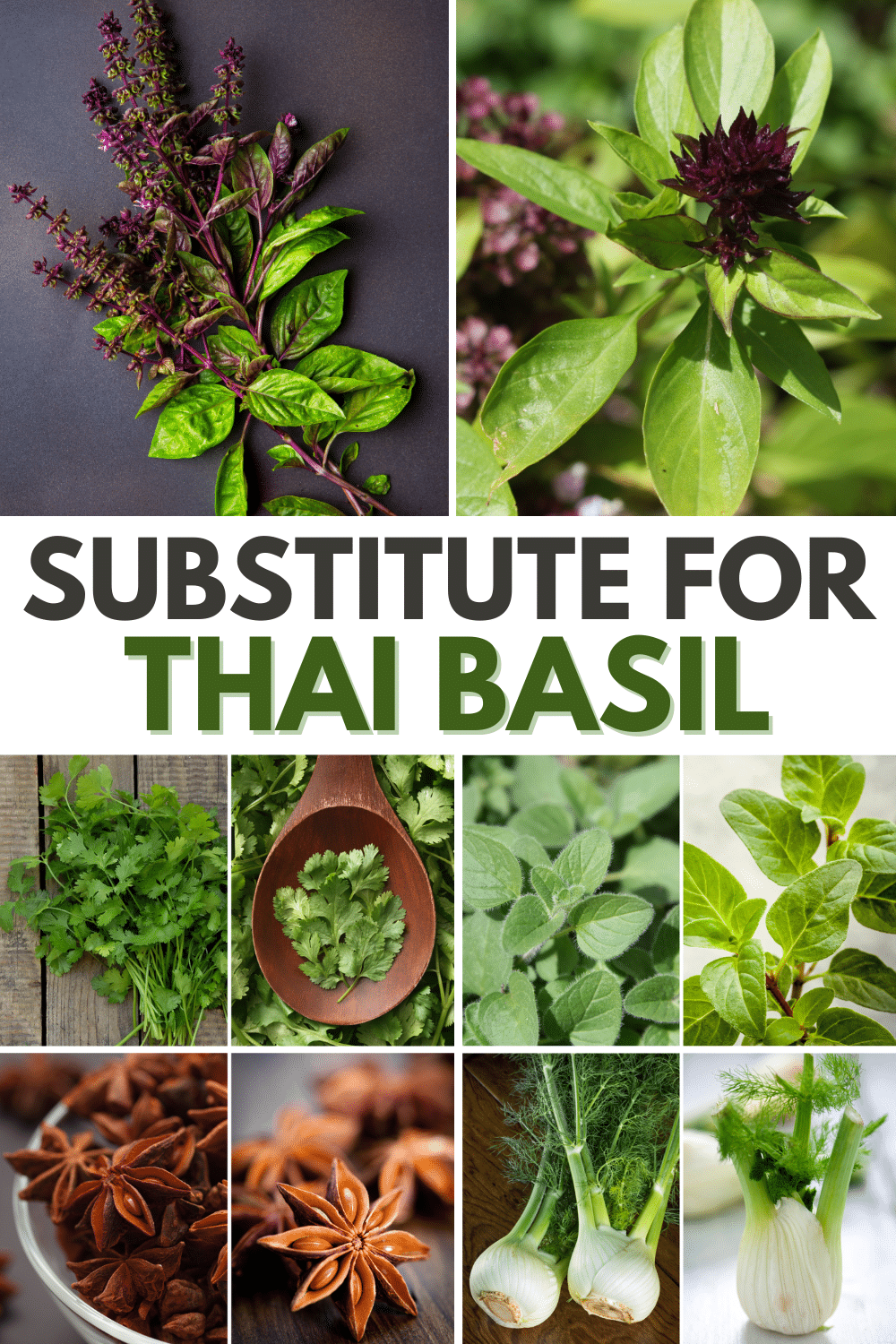You won’t have to cancel your plans of serving a delicious Asian dish if you know the best substitute for Thai basil.
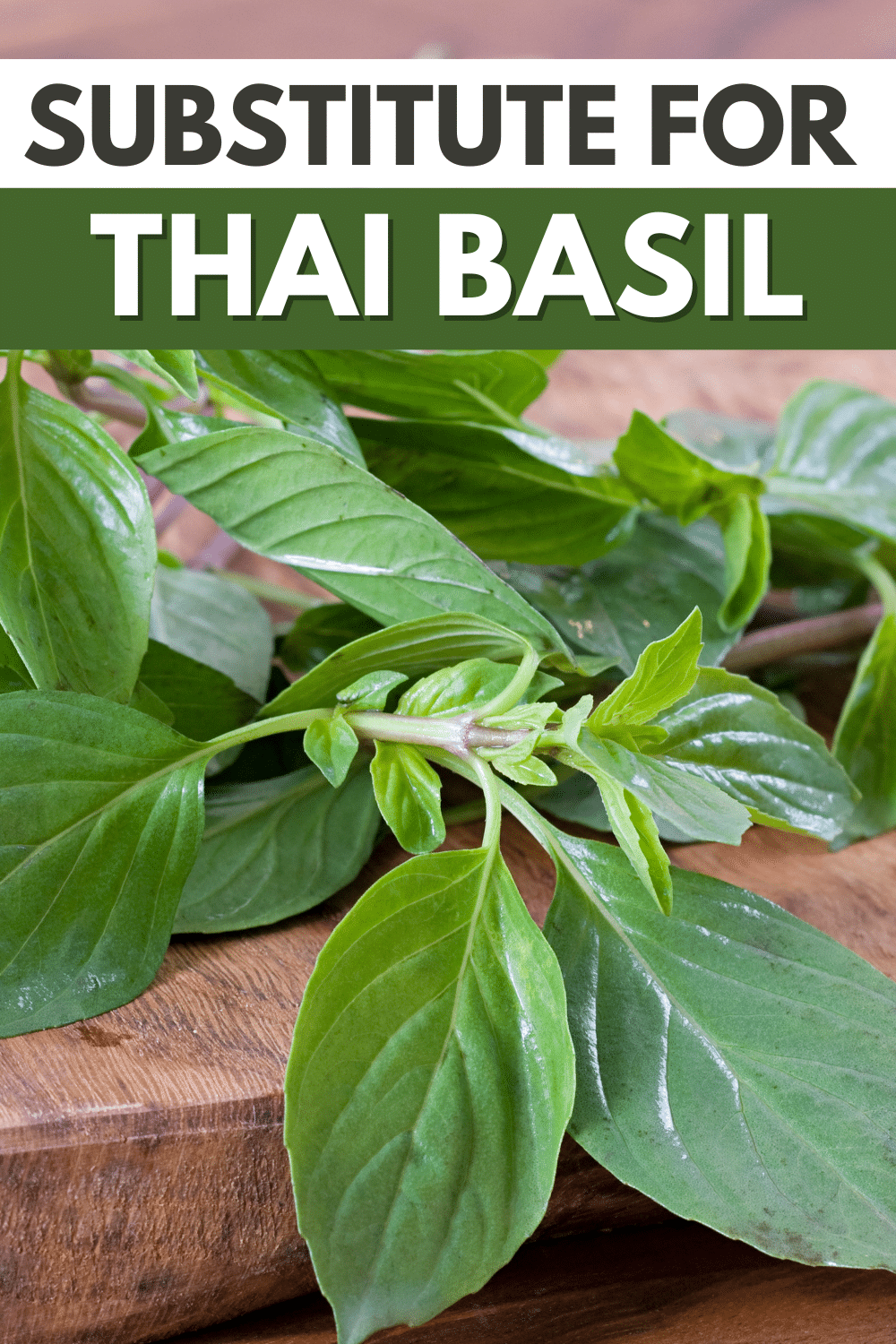
A staple in many Thai and Asian cuisines, Thai basil gives off a distinct herb flavor. Its taste and aroma are so recognizable that there’s no exact alternative for it.
However, that doesn’t mean you have to abandon your dinner plans if the recipe calls for Thai basil and it’s not available in the kitchen.
Keep reading to find some of the great Thai basil alternatives that will best fit the flavor of your dish.
Jump to:
What Is Thai Basil?
As you can tell by its name, this variety of basil is native to Southeast Asia. You can easily differentiate it from other types of basil in the supermarket because of its appearance.
The leaves are narrower and have some serration on the edges. While it also has dark green leaves, the stems tend to have a dark purple hue.
Thai basil has slightly tougher leaves, which means it can be added to stir-fried dishes and noodles that typically use higher cooking temperatures.
It’s also commonly used in Thai dishes like soups, broths, and curries that require longer hours of cooking time.
In terms of flavor, the Thai basil’s licorice note makes its aromatic taste very recognizable. This type of basil also gives off a hint of peppery taste and an unmistakable pungent flavor.
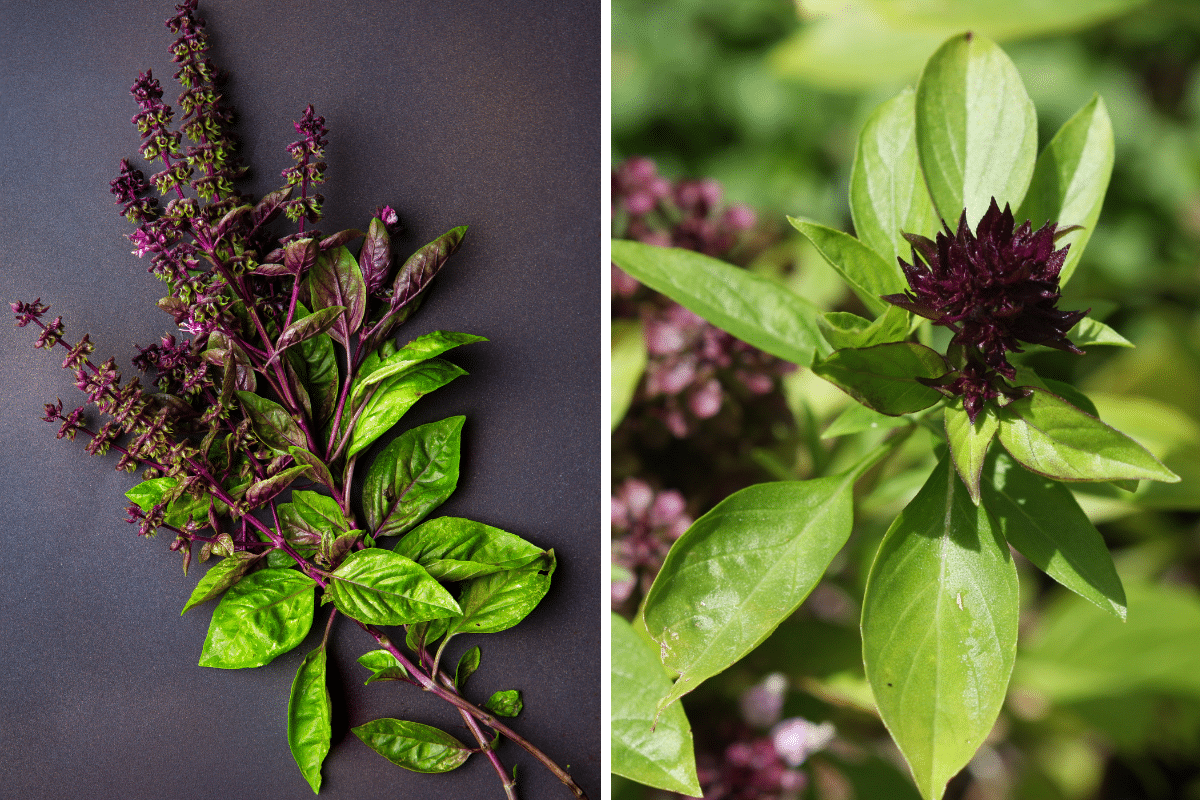
Different Types of Basil Leaves to Replace Thai Basil
Sweet Basil
True to its name, this type of basil is popular for its sweet and herbaceous flavor. It has a slight peppery hint, but it’s very mild compared to Thai basil.
You can consider this as a Thai basil substitute if you need something easy to find because it’s the most common basil sold in stores.
However, it’s notably lacking the licorice-like taste of Thai basil. With its milder flavor, you can use a substitution measurement of a 1:1.5 ratio of Thai basil to sweet basil.
Sweet basil goes well in sauces like pesto and meat marinades. Sweet basil leaves are more delicate, so it’s also great in salads and as a pizza topping.
Holy Basil
Looking for a substitute with the closest possible flavor to Thai basil? Holy basil, also known as tulsi, fits that description!
It’s native to the Indian subcontinent, where it’s also widely used for religious ceremonies and Ayurvedic medicine. But holy basil is also widely available in Southeast Asian regions, where it’s commonly used in many local cuisines.
Holy basil has a nice blend of spicy, sweet, and pungent flavors that resemble cloves, yet it lacks Thai basil’s familiar licorice flavor.
It has a more robust flavor and is more fragrant than Thai basil, which I learned the hard way when I first used it in a recipe. So, I recommend starting with less holy basil.
If the recipe calls for 1 tablespoon of Thai basil, start with just 1/2 of holy basil, then build the flavor to your preference.
You can use holy basil in most recipes that call for Thai basil or even fresh basil, especially in soups, sauces, and curry dishes. But this alternative has fuzzy leaves, so I don’t recommend it for salads or as a garnish.
Lemon Basil
Many Asian dishes taste even better with a hint of citrusy flavor, which is the most recognizable taste in lemon basil. This herb also has a delicate floral aroma but, overall, it’s one of the basil leaves with the mildest flavor.
Lemon basil can be an excellent replacement for Thai basil in soups, chicken and fish marinades, and salad dressings. You may also add some sweet basil for a touch of peppery taste.
You can replace Thai basil with lemon basil using a 1:1 ratio.
Best Substitutes for Thai Basil: Other Herbs and Spices
Oregano
Oregano can be a good substitute for Thai basil if your dish needs a robust, earthy flavor with a slightly bitter undertone. You can combine oregano with a common basil to get a peppery hint.
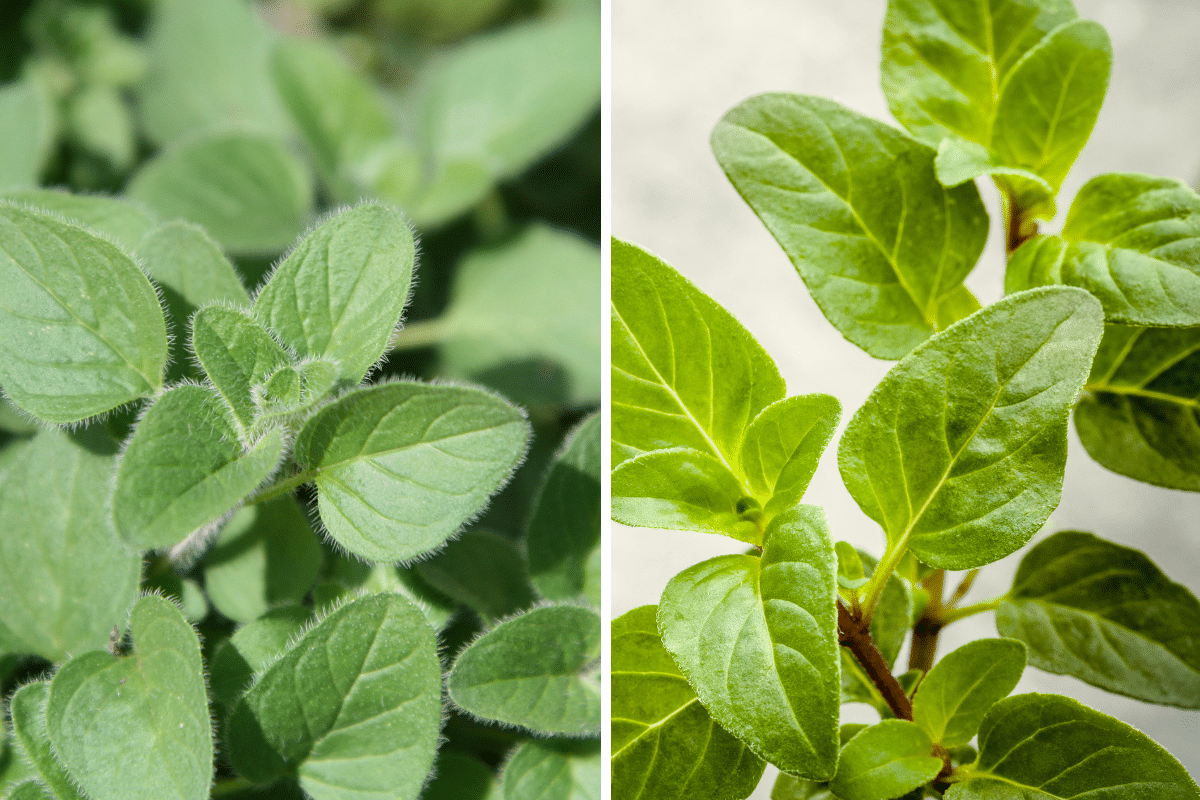
Thai basil and oregano have bold flavors, so you may use the same amount of basil needed in a recipe.
Oregano goes well in meat marinades, braising liquids, stews, and sauces.
Star Anise
You don’t have to completely miss the licorice flavor of Thai basil, especially if you use star anise as a substitute. This spice is arguably the most common source of licorice taste in many recipes, making it a good alternative to Thai basil.
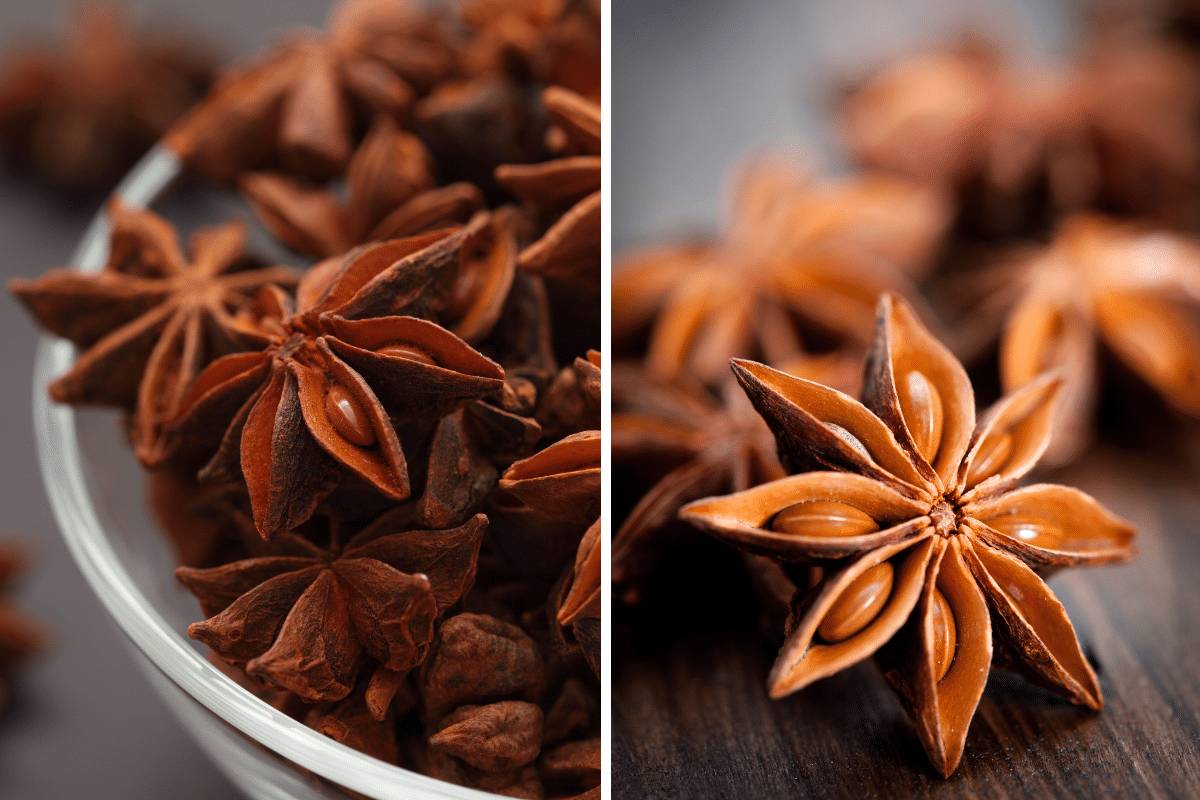
It has a slight peppery hint but can be a bit more pungent. So when substituting with star anise, start with just half the amount indicated for Thai basil in a recipe.
Star anise isn’t an herb, and it’s commonly in whole dried pods or ground powder. That means you can’t use it to replace Thai basil as a garnish and in salads.
Mint
Basil and mint come from the same plant family, although they don’t taste the same. However, mint leaves can replace Thai basil to elevate the flavor of salad dressings and soups.
Mint is not overpowering, so replacing Thai basil with its cousin herb should be safe using a 1:1 ratio.
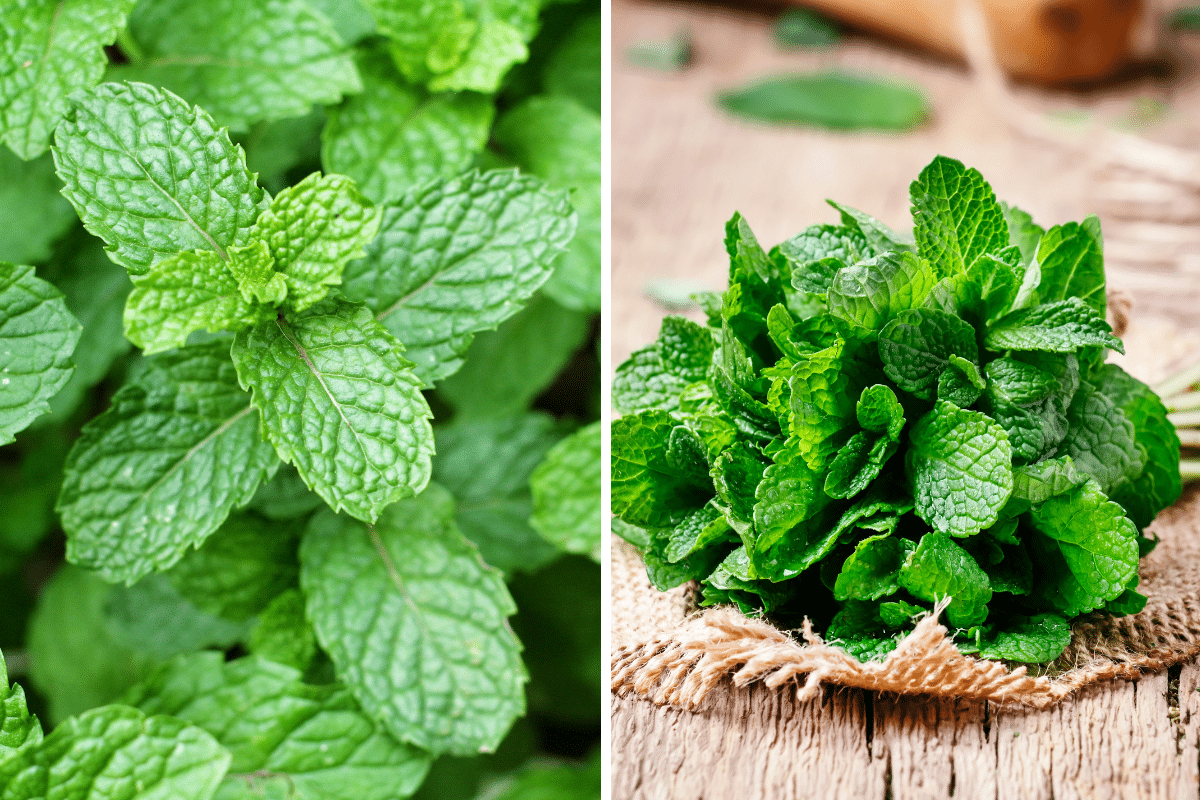
Another great option is to combine mint leaves with regular basil, which should add a more earthy and peppery flavor to the mix. If the recipe needs 1 tablespoon of Thai basil, you can use 1/2 tablespoon each of mint and regular basil.
Fennel
Fennel is another fantastic Thai basil substitute that will impart a distinct licorice flavor and aroma to your dish. Whether you use fennel leaves or dried fennel seeds, it will provide you with an anise-like taste and aroma.
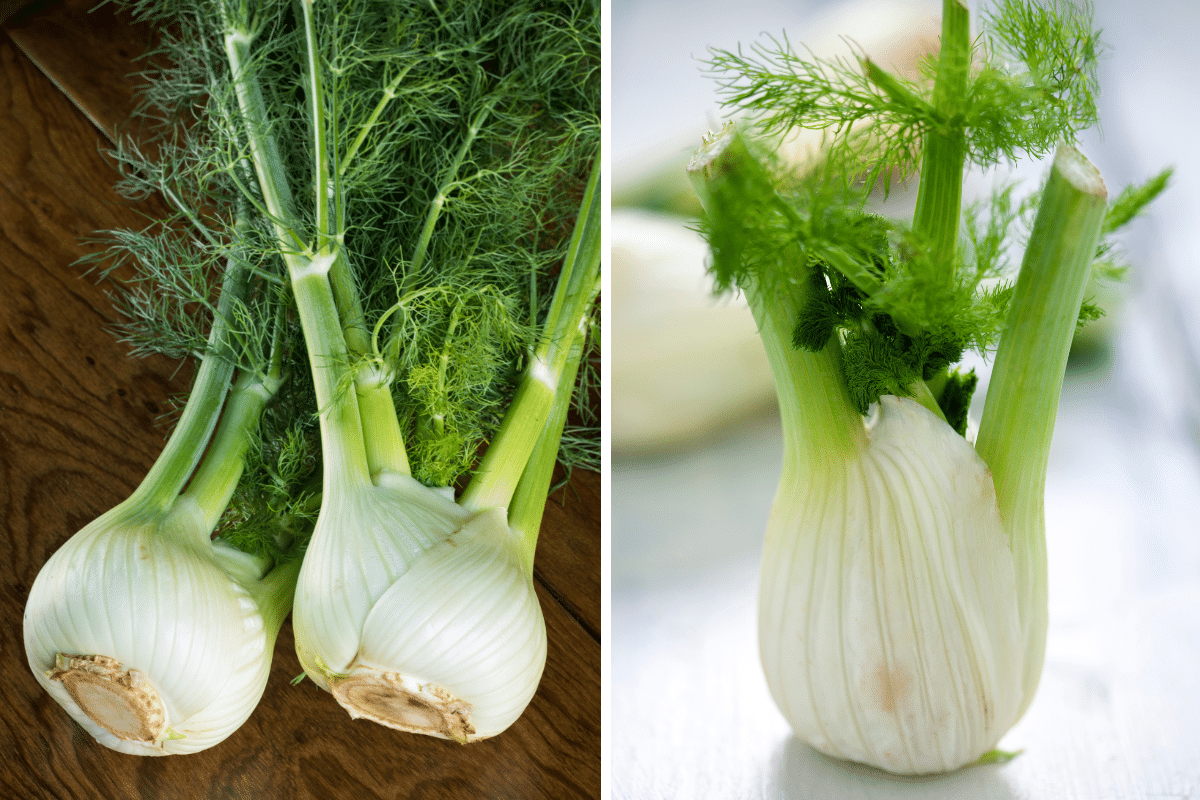
You can chop fennel leaves and eat them raw, making them a suitable Thai basil alternative in salads and garnish for soups, curries, and stews.
Fennel seeds can be used as is, but lightly toasting them will bring out their peppery notes.
For a more robust taste, grind fennel seeds on a mortar and pestle or a spice grinder, and it’s good to go as an addition to spice rubs or marinades for grilling and roasting.
Cilantro
The flavor profile of cilantro is known for having a blend of peppery and pungent notes. But it also has a recognizable zesty, lemony taste.
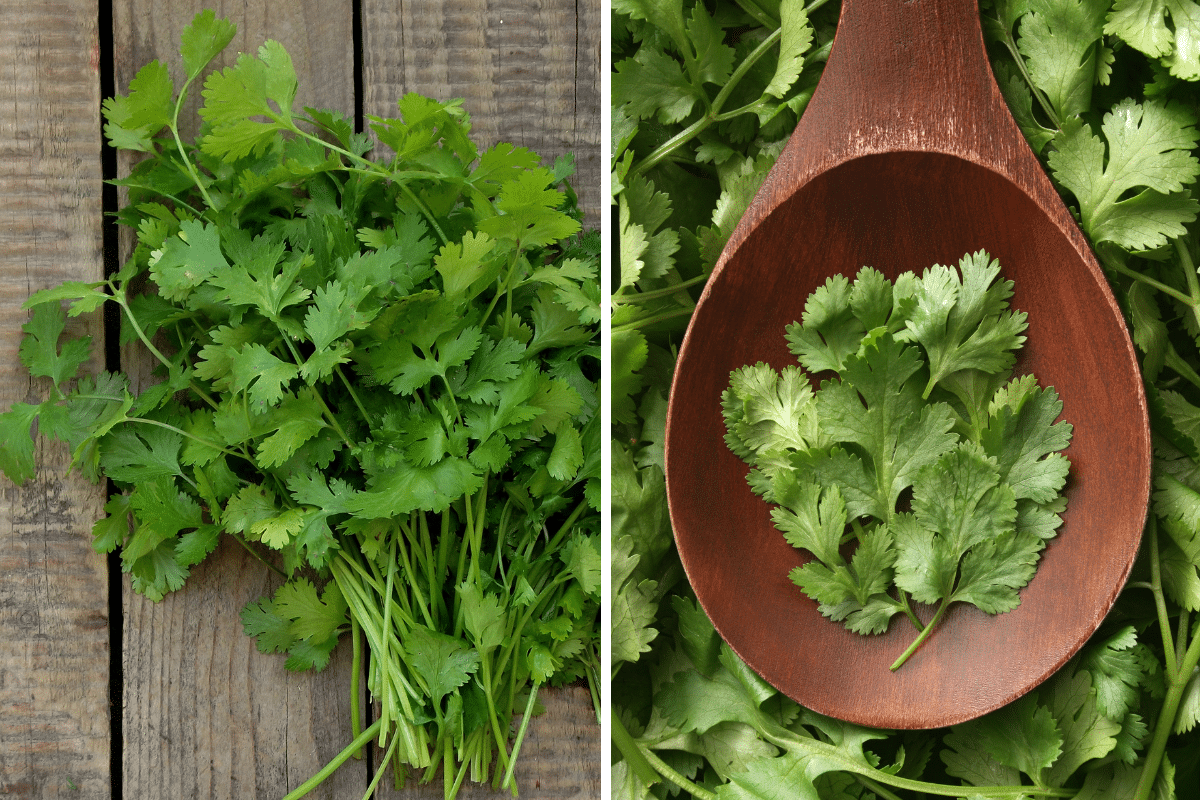
It may be a major jump from Thai basil, but adding cilantro in recipes like spicy curries, stews, and soups can help enhance the taste of the dish.
Cilantro leaves are less resilient than Thai basil leaves, so you should add them at the end of cooking. If you don’t mind the “soapy” taste of cilantro, you can also add it fresh on salads, dressings, and garnish.
Tips in Using a Good Thai Basil Substitute for Your Recipes
Thai basil is one of the more challenging ingredients to replace. The job doesn’t end in finding a substitute herb or spice. You should also keep in mind these helpful tips to ensure your choice of Thai basil alternative will fit with the overall taste of the dish.
1. Use the most appropriate substitution ratio. If you’re unfamiliar with an herb or spice that will replace Thai basil, it’s best to start with a smaller quantity and build the flavor.
2. Taste as you cook. You may have to do this more than once, but it’s important not to skip this part until the flavor of the dish is up to your preference.
3. Get creative and experiment with herb and spice combinations. Thai basil’s very distinct flavor and aroma means your recipe might require more than one alternative ingredient.
Here are some of the combinations you can try:
- Holy basil and sweet basil
- Sweet basil and mint
- Sweet basil and cilantro
- Star anise and sweet basil
- Fennel and sweet basil
FAQ
If Thai basil is not available in the nearest supermarket, you may find it in Asian markets. It’s also quite easy to find in online grocery stores if you’re not in a hurry.
Yes. It’s easy to grow in your herb garden, especially if you live in areas within US hardiness zones 10 to 11. It can thrive in well-draining soil. Thai basil can grow with partial sun, but it loves soaking in full sun.
Most types of basil leaves can last up to two weeks if you store fresh herbs in a Ziplock bag or any airtight container in the fridge.
If you want it to last for two to three months, you can freeze basil leaves by storing them in a freezer bag. You can also puree it and let it freeze in ice cube trays.
Broaden Your Culinary Creativity With the Best Substitute for Thai Basil
Replacing Thai basil in Asian cuisines and any recipe is a tough challenge, but not entirely impossible. If it’s not always available in nearby groceries in your area, you’ll thank yourself for knowing a few good substitutes for this delicious herb.
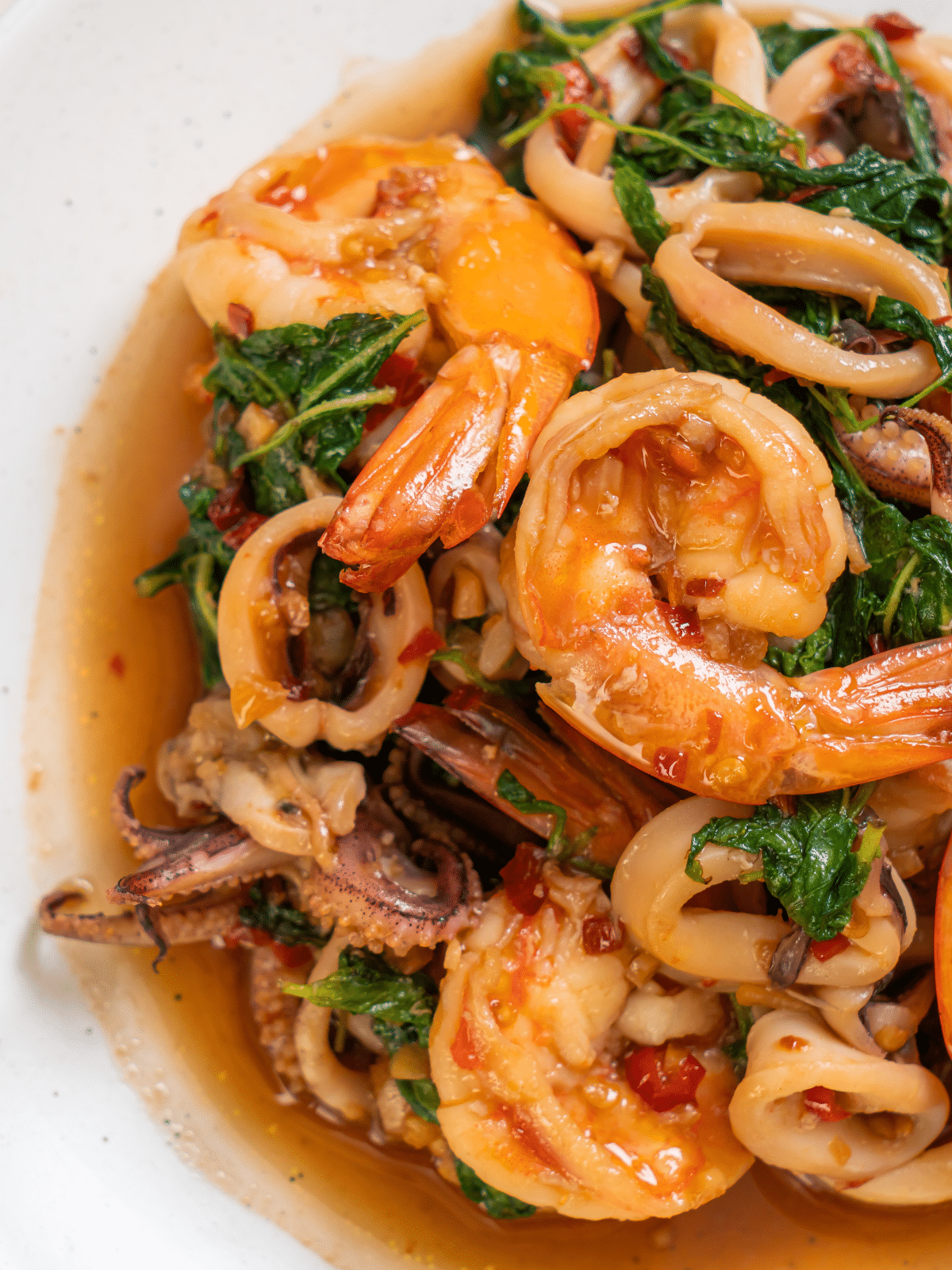
Take the challenge, and expand your culinary skills. Then, you and your family can enjoy scrumptious and savory Thai dishes anytime you want!

